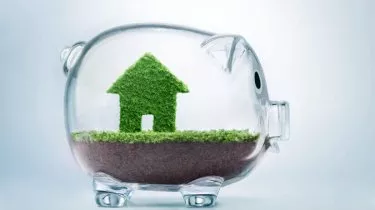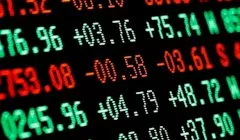Resources
‘Green is good’… for investors too.
Promoted by Charter Hall Direct
Green buildings have the best tenants, best occupancy levels and the highest rents.
‘Green is good’… for investors too.
Promoted by Charter Hall Direct
Green buildings have the best tenants, best occupancy levels and the highest rents.

There was a time, not so long ago, when ethical investing was seen as a quaint niche market segment. There was always going to be a small percentage of the investing public whose priority was investing in socially responsible companies, rather than simply chasing the almighty dollar by investing in the companies promising the highest returns.
Cigarettes and armament companies are on many peoples list of least ethical industries, followed closely by businesses associated with high carbon emissions such as coal miners.
Happily, there is a large body of evidence suggesting ethically focused companies also deliver better investment returns over enterprises who do not actively espouse and pursue altruistic policies and practices.
‘ESG’ is the common shorthand in management and investing circles for ethically focused businesses. It stands for Environmental, Social and Governance.

It is increasingly common for fund managers and investment analysts to apply an ‘ESG filter’ to the decision making process in deciding whether to add a certain equity stock to their portfolio, particularly when analysing and investing in so-called Emerging Market economies such as Brazil, Russia, India and China.
‘Triple bottom line’ is another investment jargon,sometimes referred to instead of ESG. This refers to judging a company’s performance not just on its headline ‘commercial results’but also on its environmental performance, social and/or community’impact, and its governance framework. Three bottom lines as it were.
When it comes to my profession in the investment property sector, one commonly used metric for measuring environmental performance in buildings is Green Star.
The Australian Green Star rating system for buildings is administered by the Green Building Council of Australia(GBCA) and is nationally and internationally recognized as a world leading built environment sustainability rating framework.
Eligible buildings are awarded a star rating (out of 6 stars), based on their performance in achieving a high level of environmental sustainability in design, construction and operation.
Green Star focuses on a number of areas,including how buildings are managed on a day-to-day basis and the policies and practices in place to ensure strong sustainability performance, energy and water efficiency, greenhouse gas emissions,on-site renewable energy generation, waste and recycling, and indoor environmental quality. The use of sustainable materials in the building, accessibility to transport networks, impacts on surrounding land uses and environment,and innovation in building design and operation also make up considerations in these ratings.
I am very pleased to report that my firm, Charter Hall, which is one of the largest investment property owners and managers in Australia with over $20 billion of property under management, has recently been acknowledged as the greenest property landlord in Australia by the GBCA, for having the most amount of Green Star certified space in the country.
As the head of Charter Hall Direct, which is the unlisted property fund division of our business, I regularly interact with investors in our funds including the multi- award winning Charter Hall Direct Office Fund, the Charter Hall Direct PFA Fund and the Charter Hall Direct Diversified Consumer Staples Fund.
We are a proud company that aspires to be the best corporate citizen we can be - championing social responsibility, equal opportunity and environmental responsibility are embedded in our collective psyche and daily operation.
Further, I also never tire of explaining that all the apparently non-financial aspects of our culture actually are significant contributors to the bottom line of investors. This applies to investors in our direct funds, our ASX listed REITs, and our private syndicates.
Why?
Because numerous studies show green buildings are good business practice. Green buildings show better capital growth, better rents and lower operating costs and lower vacancy rates than comparable non-green star buildings.
For instance, the recent Building Better Returns Report published by the Australian Property Institute and Property Funds Association found that green star rated buildings deliver a 12% premium in value and a 5% premium in rent when compared to non-rated buildings.
Its confirmation of what we know from our everyday experience in the investment property market dealing with major corporate tenants. Green buildings attract better tenants, are associated with lower tenant turn over and attract higher rents.
From a nestegg builders point of view, when considering where to invest the funds you have allocated to property (the major super funds allocate 8%-15% to investment grade commercial property) in makes sense to examine the green credentials of the funds, and fund managers,you are considering. And remember, green is good.
Steven Bennett
Head of Charter Hall Direct

Sponsored features
Dissecting the Complexities of Cash Indices Regulations: An In-Depth Analysis
Introduction In recent years, the world of finance has seen a surge of interest in cash indices trading as investors seek potential returns in various markets. This development has brought increased ...Read more

Sponsored features
The Best Ways to Find the Right Trading Platform
Promoted by Animus Webs Read more

Sponsored features
How the increase in SMSF members benefits business owners
Promoted by ThinkTank Read more

Sponsored features
Thinktank’s evolution in residential lending and inaugural RMBS transaction
Promoted by Thinktank When Thinktank, a specialist commercial and residential property lender, recently closed its first residential mortgage-backed securitisation (RMBS) issue for $500 million, it ...Read more

Sponsored features
Investors tap into cyber space to grow their wealth
Promoted by Citi Group Combined, our daily spending adds up to opportunities for investors on a global scale. Read more

Sponsored features
Ecommerce boom as world adjusts to pandemic driven trends
Promoted by Citi Group COVID-19 has accelerated the use of technologies that help keep us connected, creating a virtual supply chain and expanded digital universe for investors. Read more

Sponsored features
Industrial property – the silver lining in the retail cloud
Promoted by ThinkTank Read more

Sponsored features
Why the non-bank sector appeals to SMSFs
Promoted by Think Tank Read more

Sponsored features
Dissecting the Complexities of Cash Indices Regulations: An In-Depth Analysis
Introduction In recent years, the world of finance has seen a surge of interest in cash indices trading as investors seek potential returns in various markets. This development has brought increased ...Read more

Sponsored features
The Best Ways to Find the Right Trading Platform
Promoted by Animus Webs Read more

Sponsored features
How the increase in SMSF members benefits business owners
Promoted by ThinkTank Read more

Sponsored features
Thinktank’s evolution in residential lending and inaugural RMBS transaction
Promoted by Thinktank When Thinktank, a specialist commercial and residential property lender, recently closed its first residential mortgage-backed securitisation (RMBS) issue for $500 million, it ...Read more

Sponsored features
Investors tap into cyber space to grow their wealth
Promoted by Citi Group Combined, our daily spending adds up to opportunities for investors on a global scale. Read more

Sponsored features
Ecommerce boom as world adjusts to pandemic driven trends
Promoted by Citi Group COVID-19 has accelerated the use of technologies that help keep us connected, creating a virtual supply chain and expanded digital universe for investors. Read more

Sponsored features
Industrial property – the silver lining in the retail cloud
Promoted by ThinkTank Read more

Sponsored features
Why the non-bank sector appeals to SMSFs
Promoted by Think Tank Read more











